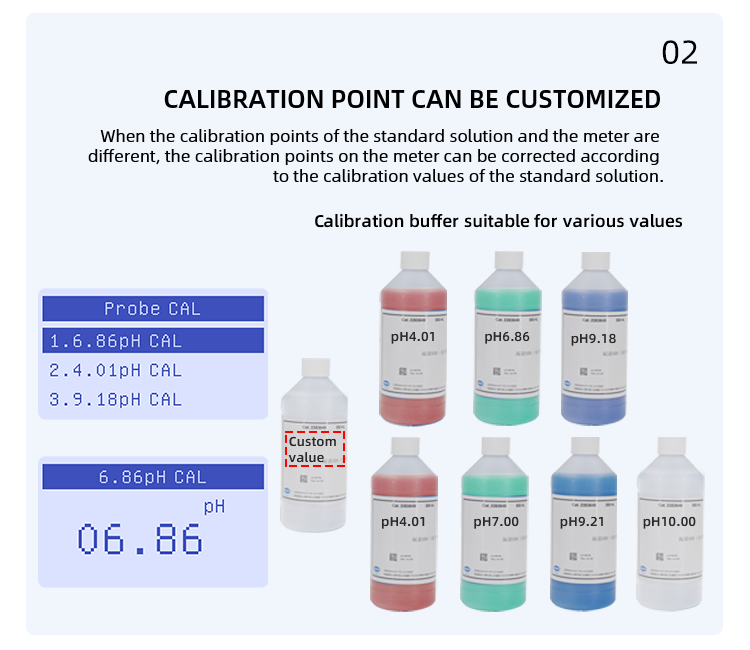At present, there are many sayings about the classification of stone. Generally speaking, there are four types:
Statement 1: Building decorative stone can be roughly divided into two categories: granite and marble;
Statement 2: Architectural finish stone can be roughly divided into three categories: granite, marble and slate;
The third statement: Building decorative stone can be roughly divided into two categories: natural stone and artificial stone;
The fourth statement: architectural decorative stone can be roughly divided into five categories: granite, marble, sandstone, slate, artificial stone.
From the fourth statement, we explain the basic characteristics of various types of stone.
First, the granite of the stone type
1. Formation: Granite is formed by the eruption of underground magma and intrusion into cooling crystals, as well as granitic metamorphic rocks.
2. Composition: The main component of granite is silica, which is about 65%-85%.
3. Chemical properties: The chemical properties of granite are weakly acidic.
4. Structure; the structure of granite is usually a point structure, the particles are coarser (referred to as silica), the surface pattern distribution is regular, and the hardness is high.
5. Due to the special conditions and firm structural characteristics of granite formation.
It has the following unique features:
(1) It has good decorative properties and can be applied to public places and outdoor decoration.
(2) Excellent processing properties: sawing, cutting, polishing, drilling, engraving, etc. The processing precision is up to 0.5 μm and the luminosity is above 100 degrees.
(3) Good wear resistance, 5-10 times higher than cast iron.
(4) The coefficient of thermal expansion is small and not easily deformed. It is similar to indium steel and has little effect on temperature.
(5) The modulus of elasticity is large, higher than that of cast iron.
(6) Good rigidity, large internal damping coefficient, 15 times larger than steel. It can be shockproof and shockproof.
(7) Granite is brittle, and only partially falls off after damage, and does not affect the overall straightness.
(8) Granite is chemically stable, difficult to weather, resistant to acid, alkali and corrosive gases. Its chemical properties are directly proportional to the silica content, and its service life can reach 200 years.
(9) Granite has non-conductivity, non-magnetic, stable position, etc., and many excellent properties.
Second, the marble of the stone type
Marble is the metamorphic rock formed by the original rock in the earth's crust through high temperature and high pressure in the earth's crust. The internal force of the earth's crust causes the original rock to undergo qualitative changes, that is, the structure, structure and mineral composition of the original rock change. The new rock formed by the qualitative change is called metamorphic rock.
Marble is mainly composed of calcite, limestone, serpentine and dolomite. Its main component is calcium carbonate, accounting for more than 50%. Since marble generally contains impurities, and calcium carbonate is exposed to carbon dioxide, carbides, and moisture in the atmosphere, it is also easily weathered and eroded, and the surface quickly loses its luster. Marble is generally soft in nature, as opposed to granite.
Marble grinding, polishing and crystallization processing. Marble is collectively called marble. With its natural and simple texture, the color is bright and bright. It is widely used in architectural interior wall. Because the marble material is loose, the texture is soft. Relatively high. There are many joint lines, so various pollution and warping deformation, easy loss of light and other phenomena occur during processing, transportation, installation and use, which affects the decorative effect. Therefore, the care of marble is also a compulsory course for the nursing industry. To compare and analyze the condition of marble finishes, the methods of care can be divided into:
First of all, before the refurbishment and polishing, the purpose is to make the stone absorb water as little as possible, so as to reduce the water absorption law of the stone, and then make waterproof after 300#. At that time, the effect of waterproofing will be reduced or disappeared due to the grinding, and the conditions permit. In case of the best 800#, do another waterproofing.
In the case of relatively loose stone, such as white sand beige, sandstone, tropical rain forest, wood grain, etc., first use high-content sealing curing agent (such as super-hard inorganic coating, 40% silicone resin sealant) for pre-treatment. The stone is hardened while filling the loose material.
The extremely structural characteristics of marble make it have the following properties:
(1) Excellent decorative performance. Marble does not contain radiation, and its color is bright and colorful. It is widely used for interior wall and floor decoration.
(2) Excellent processing properties: sawing, cutting, polishing, drilling, engraving, etc.
(3) The wear resistance of marble is good and it is not easy to age. Its service life is generally around 50-80 years.
(4) In the industry, marble is widely used. Such as: used in raw materials, purification agents, metallurgical solvents.
(5) Marble has the characteristics of non-conductivity, non-magnetic conduction, and stable field.
Third, the stone type Daquan sandstone
1. Formation: Sandstone, also known as sandstone, is a kind of sandstone and cement (silica, calcium carbonate, clay, iron oxide, calcium sulfate, etc.) that has been compressed and bonded by long-term pressure due to the earth's crustal movement. Sedimentary rock.
2. Ingredients: The main component is sand (silica) content of more than 65%, cement.
3. Nature: It is weakly acidic.
4. Structure: The particles of sand and gravel are uniform, the texture is fine, the structure is loose, so the water absorption rate is high (the cost is high when it is protected), it has sound insulation, moisture absorption, damage resistance, weather resistance, fading resistance, water insolubilization, no Radioactivity and other characteristics.
5, sand and stone can not be polished, is a matt stone, so it reveals the natural form, rich in cultural connotations. The sandstone is decorated in a warm, elegant style with a warm and elegant atmosphere. According to the characteristics of this type of stone, it is often used for interior and exterior wall decoration, furniture, sculpture, and garden construction materials. .
6. The hardness of sand and gravel has an intrinsic connection with its cause. Some high-quality sandstones are very tightly structured and even harder than granite. In terms of durability, sandstone is comparable to marble and granite. Many of the buildings built with sandstone a hundred or two years ago still have the same style and charm.
Fourth, the stone of the stone type Daquan
1. Formation: Slate is also a sedimentary rock, which is formed in the same way as sand.
2. Composition: The main component is silica. It is characterized by acid resistance. Stone 139 website can be divided into three types according to the composition of slate:
(1) carbonate type slate: its composition silica content is less than 40%, aluminum oxide content is less than 10%, calcium oxide content is less than 15%, magnesium oxide content is less than 10%, and ferric oxide content is 3 % - 7%.
(2) Clay-type slate: its composition is mainly clay minerals such as sericite, illite, chlorite, kaolin, etc., which account for more than 80% of the mineral composition of slate, its silica content is more than 50%, and oxidized The aluminum content is greater than 12%, the calcium oxide content is less than 10%, the magnesium oxide content is less than 5%, and the ferric oxide content is higher than the carbonate type slate.
(3) Carbonaceous and siliceous slate: The mineral composition is between clay-type slate and carbonate-type slate. Due to the strong degree of silicification, the silica content is high, the stone is quite hard and the color is dark.
3. Nature: It becomes weakly acidic.
4, structure; slate structure is characterized by flakes or blocks, fine particles, particle size between 0.9 ~ 0.001mm is usually cryptocrystalline structure, more dense, and most of them are oriented, rock cleavage is very developed thickness uniform The hardness is moderate and the water absorption rate is small. Its life expectancy is generally around 100 years. The color of slate is mostly monochromatic. Such as: gray, yellow, green gray, green, cyan, black, maroon, red, purple, and so on. Because the color is pure and pure, in terms of decoration, it gives people a sense of elegance and generosity. The slate is generally no longer polished, showing a natural form and forming a natural beauty.
Therefore, the color of sandstone and slate is better than marble and granite, and its decoration is often used in places with rich cultural connotations.
5. Artificial stone of stone type Daquan
In recent years, with the country's advocacy of green building materials, the application of new energy-saving environmentally-friendly stone artificial stone has become more and more extensive.
Artificial stone usually refers to artificial stone solid surface material, artificial stone quartz stone, artificial stone granite and the like. Different types of artificial stone have different ingredients. The ingredients are mainly resins, aluminum powders, pigments and curing agents. The practical building materials using polymer, the manufacturing process is a chemical material reaction process, which is a practical scientific material produced with the advancement of human social science and technology and is still being improved. It is mainly used in the architectural decoration industry. It is a new environmentally friendly composite material. Compared with traditional building materials such as ceramic tiles, artificial stone is not only versatile, but also rich in color and application range. Artificial stone is non-toxic, radioactive, flame retardant, non-sticky, non-staining, antibacterial, mildewproof, abrasion resistant, impact resistant, easy to maintain, seamlessly spliced, and versatile.
species:
1. The artificial stone is a “polymer material polymerâ€, which is usually a “solid polymer solid board†which is formed by stirring, shallow injection, heating, polymerization, etc., which is mainly composed of unsaturated resin and aluminum hydroxide filler. Generally referred to as: "resin plate artificial stone."
2. Artificial stone with “methyl methacrylate†(MMA) as the main material, also known as acrylic artificial stone.
3, MMA, resin mixed artificial stone, is a practical artificial stone between the above two kinds of artificial stone.
Ph orp controllers are widely used in thermal power, chemical fertilizer, metallurgy, environmental protection, pharmaceutical, biochemical, food and tap water industries. With a suitable pH sensor or orp sensor, the pH value or ORP value and temperature in the solution can be continuously monitored. Daruifuno's pH ORP controller has 2 channels of 0/4-20mA current output, supports signal remote transmission and long-term calibration, and also has a two-wire RS485 interface, which can be easily connected to the computer through the MODBUS-RTU protocol for monitoring and recording .
As an online dosing control pH meter, the control function is very important. Our controllers are equipped with 2 relays that can be set by SPST. Customers can set the opening value and closing value to realize the control of the acid-base dosing pump, temperature and cleaning control.

For the convenience of customers, the small-sized pH controller also adds a quick calibration button. The calibration of the pH ORP controller is also very important. It is usually recommended that the electrode needs to be calibrated every 7 days. Our ph meter transmitter supports pH three-point calibration , ORP two-point calibration, and the calibration point can be set by yourself.

In addition, we also have the solution ground ph meter, which can be connected with the SG sensors, used for power plant pure water.
Such a multifunctional pH ORP controller has a very favorable price. We have many models to meet different needs and save costs for customers.
Ph Orp Controller,Solution Ground Ph Meter,Dosing Control Ph Meter,Ph Meter Transmitter
Suzhou Delfino Environmental Technology Co., Ltd. , https://www.daruifuno.com